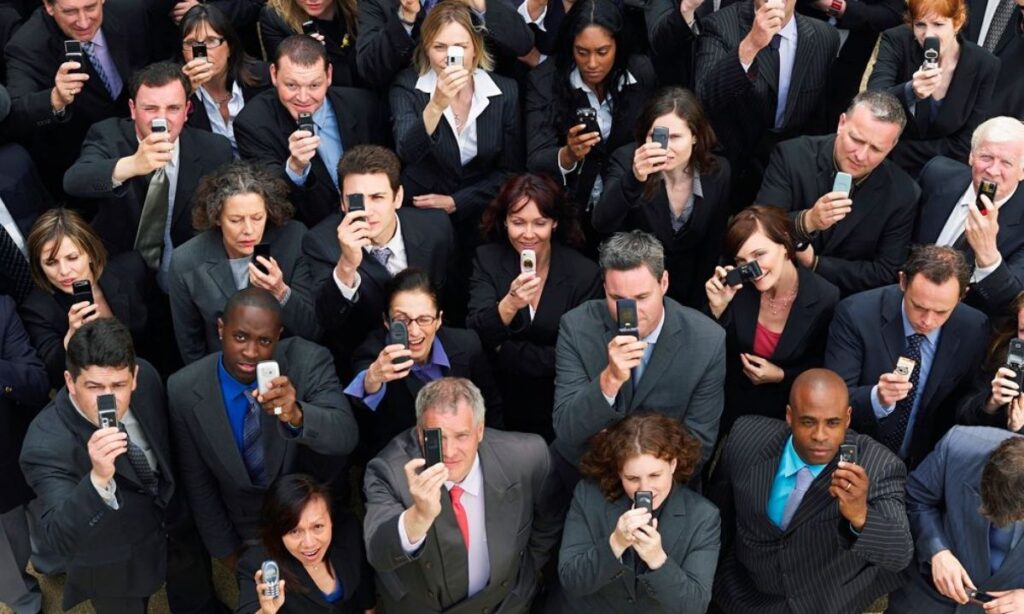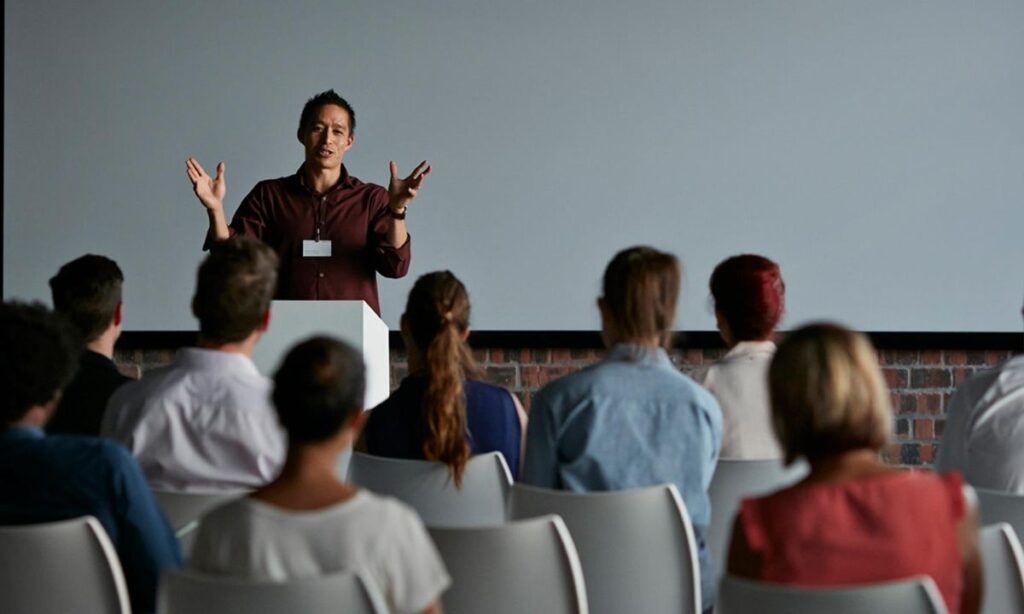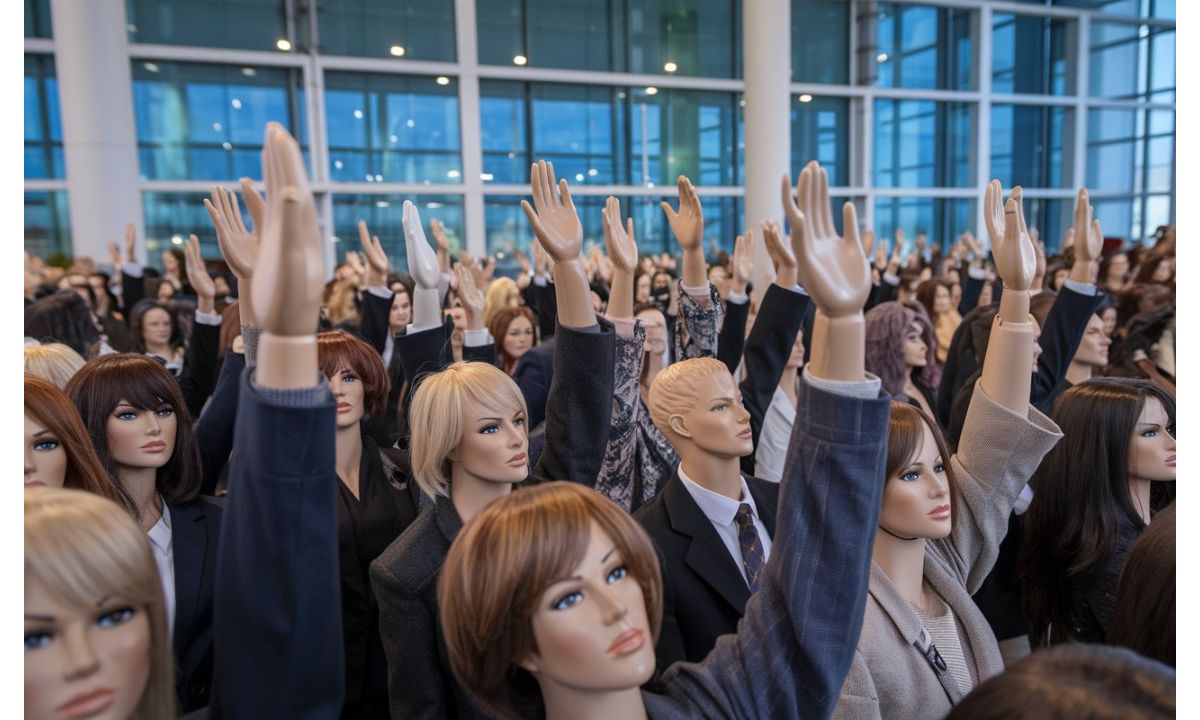In today’s digital age, the line between reality and fiction has become increasingly blurred. One of the most concerning phenomena in this landscape is the rise of human gathering fake – fabricated events that appear to show large groups of people coming together for a specific purpose.
This article delves deep into the mechanisms, impacts, and countermeasures surrounding this form of digital deception.
Breaking Down the Mechanisms Behind Social Fabrication
This section dives into the nuts and bolts of how human gathering fake works. It explores the psychological tricks that make us vulnerable to believing false information, like cognitive biases and our tendency to trust what we see. It also looks at why people create these fakes in the first place – often for political gain or to make money. Finally, it touches on the tech tools used to create convincing fakes, from AI to deepfakes.
Fundamentals of Psychology
At the heart of human gathering fake lies a complex interplay of psychological factors. Our brains are wired to process information quickly, often relying on mental shortcuts known as heuristics. These cognitive vulnerabilities make us susceptible to misinformation, especially when it aligns with our preexisting beliefs.
Key cognitive biases that contribute to the spread of false gatherings:
- Confirmation bias: We tend to seek out information that confirms our existing beliefs.
- Bandwagon effect: The tendency to follow the crowd, especially when we see large groups supporting an idea.
- Availability heuristic: We give more weight to information that’s easily recalled or recently encountered.
- Illusory truth effect: The more we’re exposed to a piece of information, the more likely we are to believe it’s true.
Social proof, a psychological phenomenon where people follow the actions of others in an attempt to reflect correct behavior, plays a crucial role in the propagation of fabricated events. When we see what appears to be a massive gathering supporting a cause, our instinct is often to trust its legitimacy.
“The power of social proof in digital environments can’t be overstated. It’s a key driver in the viral spread of misinformation.” – Dr. Emily Falk, Professor of Communication, University of Pennsylvania
Conflicting Purposes
The motivations behind creating human gathering fake are diverse and often nefarious. Political manipulation stands out as a primary driver, with bad actors seeking to sway public opinion and influence democratic processes. By fabricating large-scale events, these operators aim to create the illusion of widespread support for their agenda.
| Purpose | Example | Potential Impact |
| Political manipulation | Fake protest footage to discredit opposition | Swaying election outcomes |
| Economic gain | Clickbait videos generating ad revenue | Undermining legitimate news sources |
| Social engineering | Fabricated gatherings to promote extremist ideologies | Radicalizing vulnerable individuals |
| Corporate manipulation | False product launches or events | Influencing stock prices or consumer behavior |
Two Functions of Technology
Technology serves as both the enabler and potential solution in the realm of human gathering fake. Advanced AI and deepfake technology have made it increasingly difficult to distinguish between real and fabricated content. Social media algorithms, designed to maximize engagement, often amplify sensational and controversial content, including false gatherings.
Key technological tools used in creating convincing fake gatherings:
- Video editing software with advanced compositing capabilities
- AI-powered face swapping and voice synthesis
- Crowd simulation software for creating realistic mass gatherings
- Social media bots to amplify and spread fake content
The rapid advancement of these technologies presents a significant challenge in combating human gathering fake. As the tools become more sophisticated and accessible, the potential for widespread deception grows.
Methods for Reducing Human Gathering Fake

Here we explore strategies to combat the spread of fake gatherings. It covers the importance of teaching media literacy and critical thinking skills. The section also discusses tech solutions, like AI that can spot fakes, and the role of fact-checking tools. It emphasizes the need for more transparent data sources and how social media platforms can tweak their algorithms to slow the spread of misinformation.
Raising Awareness of Media
Combating the spread of false gatherings starts with media literacy. Educational initiatives that teach critical thinking skills and digital literacy are crucial in arming the public against misinformation.
Key components of media literacy education:
- Understanding the economics of digital media
- Recognizing common manipulation techniques
- Verifying sources and cross-referencing information
- Identifying emotional triggers in content
- Learning to spot bot-like behavior on social platforms
Several organizations are leading the charge in media literacy education. The News Literacy Project, for example, offers programs for students and educators to develop critical thinking skills about news and information.
Increasing the Openness of Data Sources
Transparency in reporting and data sourcing is vital in combating fabricated events. Open-source intelligence (OSINT) techniques empower individuals to verify information independently. Blockchain technology shows promise in creating immutable records of digital content, making it harder to manipulate or fabricate events after the fact.
Case Study: The COVID-19 Tracking Project
During the COVID-19 pandemic, The COVID Tracking Project emerged as a model of data transparency. By collecting and publishing COVID-19 data from all 50 U.S. states, it provided a reliable source of information that helped combat misinformation about the pandemic’s spread.
Utilizing Detection Tools
As technology advances, so do the tools available to detect false gatherings. AI-powered fake detection software can analyze videos for signs of manipulation, while reverse image search tools help track the origins of viral images.
Popular fact-checking tools and platforms:
- Snopes
- FactCheck.org
- Google Reverse Image Search
- InVID Verification Plugin
- TinEye Reverse Image Search
These tools, when used in combination, can significantly enhance an individual’s ability to verify the authenticity of online content.
How Misinformation Spreads via Social Media
Social media platforms serve as the primary vectors for the spread of human gathering fake. The viral nature of these platforms, combined with algorithmic amplification, can cause false information to spread like wildfire.
The anatomy of a viral fake gathering:
- Creation: A deceptive video or image is produced
- Seeding: The content is initially shared on multiple platforms
- Amplification: Bots and genuine users share the content
- Mainstream pickup: Traditional media reports on the “event”
- Debunking: Fact-checkers reveal the truth, but often too late
This process can occur rapidly, often within hours, making timely debunking crucial but challenging.
Prejudice in Algorithms and the Amplification of Content
Social media algorithms, designed to maximize user engagement, often inadvertently promote sensational and controversial content, including false gatherings. This algorithmic bias can create echo chambers and filter bubbles, reinforcing existing beliefs and making it harder for accurate information to break through.
Steps social media platforms are taking to combat algorithmic bias:
- Implementing fact-checking partnerships
- Adjusting ranking algorithms to prioritize authoritative sources
- Providing more context around potentially misleading content
- Investing in AI-powered content moderation
- Offering users more control over their feed algorithms
Despite these efforts, the challenge remains significant. The balance between free speech, user engagement, and misinformation prevention continues to be a point of contention and ongoing research.
Moral Considerations in Influencing Public Opinion

This part tackles the ethical side of the issue. It looks at how fake gatherings can erode trust in online information and the long-term effects this might have on society. The section also dives into the power these fakes have to shape public opinion and the responsibility that comes with creating and sharing content online. It raises questions about the balance between free speech and preventing harm from misinformation.
Loss of Confidence in the Internet Age
The proliferation of human gathering fake has contributed to a widespread erosion of trust in online information. This loss of confidence can have far-reaching consequences, from decreased civic engagement to increased polarization.
Long-term impacts of widespread false gatherings:
- Skepticism towards legitimate grassroots movements
- Difficulty in mobilizing for real-world action
- Increased vulnerability to authoritarian manipulation
- Erosion of shared reality and social cohesion
Rebuilding this trust will require a concerted effort from tech companies, media organizations, educators, and individual users.
Influence How Things Are Done and How People See Them
The power of fake human gatherings in shaping public opinion cannot be overstated. By creating the illusion of widespread support or opposition, these fabricated events can influence everything from consumer behavior to political outcomes.
Ethical considerations for content creators:
- Verifying sources before sharing
- Clearly labeling simulated or reenacted content
- Considering the potential real-world impact of content
- Promoting diverse perspectives and avoiding echo chambers
- Being transparent about affiliations and potential conflicts of interest
As consumers of digital content, we all have a responsibility to approach information critically and thoughtfully. By doing so, we can help mitigate the impact of human gathering fake and contribute to a more informed society.
Conclusion
As we navigate the complex landscape of digital information, the challenge of human gathering fake looms large. By understanding the mechanisms behind these fabricated events, developing robust detection tools, and fostering a culture of media literacy, we can work towards a more informed and resilient society.
The battle against digital deception is ongoing, but with vigilance, education, and technological innovation, we can unmask the truth behind human gathering fake and reclaim the digital commons as a space for authentic human connection and discourse.
Remember: Stay curious, think critically, and always verify before you share. Together, we can build a more trustworthy digital world.
Frequently Asked Questions
How do human gathering fake influence public opinion?
Fake gatherings create illusions of widespread support, exploiting social proof to sway views on politics, products, or social issues.
What techniques are used to fabricate social events?
Digital manipulation, deepfakes, crowd simulation software, social media bots, and out-of-context footage are common techniques.
How can individuals detect fake social gatherings?
Use reverse image search, check for visual inconsistencies, cross-reference with reliable sources, and utilize fact-checking tools.
What is the role of digital literacy in countering misinformation?
Digital literacy equips people with critical thinking skills to evaluate online content and understand media manipulation techniques.
How do algorithms amplify fake news about social events?
Algorithms prioritize engaging content, create echo chambers, and spread viral posts rapidly, often before fact-checking occurs.
Also Read: 300+ Best Shark Names (Cool, Funny, And Cute)

